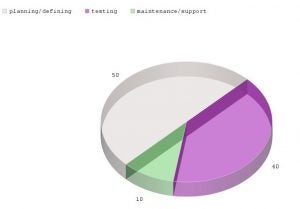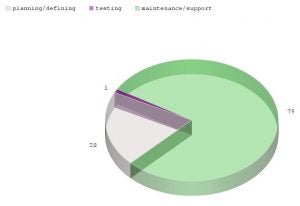Be Prepared for the Most Expensive Part of Your Software Development Efforts

At what stage does the real cost of software come? While a software development company considers profit as firm revenue minus costs, as a customer you need to have your priorities straight and ensure your financial resources are sufficient. Everything hinges on the type of software you are going to create.
Custom software can be created for an internal or external client. When purchasing this type of software, the developed system’s exclusive rights are taken by the customer. This can lead to the transferring of work on the further development of the software to another firm.
Compared to custom software, investment software development is carried out by the developer for payment from an internal or external investor. As a rule, the executor gains the right to the external code, which stimulates continuous work on improving the project’s performance, with consistent releases of versions with more advanced functionality.
Embedded software is supplied with equipment, which means that it is not subject to maintenance during the deployment stage, not least as product recall is very expensive and therefore only takes place in exceptional cases.
Game hits development doesn’t really contain a support or maintenance phase. If gaming software users come across a bug, they are usually not eager to download an updated version of the software. That’s why the gaming industry has its own economy and development process.
But all these and other types of software can be viewed through the software development lifecycle (SDLC), which may be utilized to guide the process of your future project development.
Any conceptual model for software project management includes at least 7 common stages plus a discovery phase, each of which has different time-/effort-consumption and pricing/costs:
- Planning
- Defining
- Designing
- Building
- Testing
- Deployment
- Maintenance and support
The length of the SDLC outputs can be additionally divided into two major classes: those with short and those with long lifecycles.
Are you about to develop custom software?
You’d better know ahead that a fruitful project won’t be clinched in one handshake and it will take quite some effort to get into the question and purpose at large.
The process requires significant expense and time. Thus, having invested heavily in such a project, it would be extremely complicated to terminate the development without much loss. However, you shouldn’t discount the idea, just think carefully before doing it and calculate the financial possibilities, as well as your willingness to spend a good deal of time on it, in advance.
10447 Views














